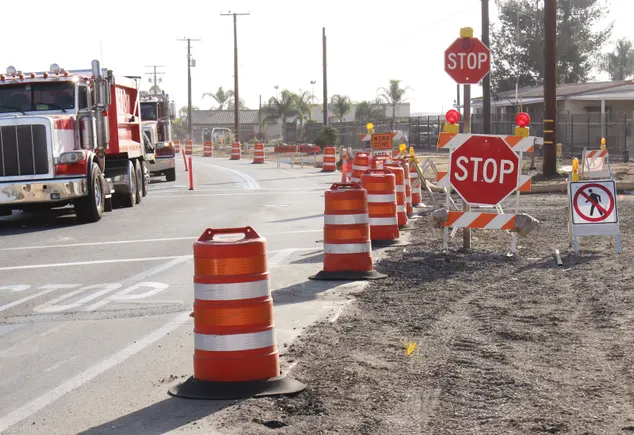Dive Brief:
- Balfour Beatty has recognized traffic as a fifth fatal risk in construction, in an attempt to expand on OSHA’s long-established Fatal Four, the firm announced in a release ahead of Construction Safety Week.
- The U.K.-based contractor with U.S. headquarters in Dallas acknowledged the hazards posed by vehicles traveling through work zones and highlighted efforts intended to mitigate the risk.
- The Fatal Four — made up of falls, struck-by, caught-in/between and electrocutions — are the top causes of fatalities in construction, according to OSHA.
Dive Insight:
The numbers show a clear pattern of danger. In 2022, there were 891 total work zone fatalities, according to the National Work Zone Safety Information Clearinghouse. Of those, 136, or about 15%, were workers or pedestrians.
Two-thirds of contractors said a car crashed into one of their highway work zones in 2024, according to a survey of highway contractors by the Associated General Contractors of America and construction software firm HCSS.
A little over a third of respondents reported no collisions in their work zones, while 33% said they had dealt with five or more.
“The statistics are staggering, construction workers in roadway work zones face life-threatening dangers every day from the driving public,” Richard Ryan, Balfour Beatty U.S. senior vice president of safety and sustainability, said in the release. “This is about protecting our people, the public and fundamentally changing how our communities approach work zones and understanding that safety is a two-way street that requires awareness and responsibility from both workers and motorists.”
The threat impacts motorists often more than it does workers in roadway jobsites, data indicates, as the majority of fatalities from work zones were motorists.
In addition, OSHA’s definition of struck-by hazards can include “instances in which the worker is struck or run over by a moving vehicle without being caught under it.” But the broad category also includes when a worker is forcefully contacted by a piece of equipment or materials.
Just slow down
As a part of the initiative, Balfour Beatty says it has executed several approaches across its operations to eliminate traffic risk in work zones, including:
- The implementation of alert systems across its highway projects, providing digital alerts to approaching drivers through navigation apps and connected vehicles.
- The deployment of specialized strobe lighting systems mounted on equipment and worn by workers, increasing visibility in all weather conditions and at night.
- Partnering with the Carolinas Associated General Contractors and legislators in North and South Carolina to incorporate work zone safety education into driver training programs.
- Working to understand how people come into contact with work zones and developing safety protocols for each scenario.
The majority of respondents to the AGC survey said the states in which they work have insufficient penalties to deter motorists from driving recklessly through work zones.
The American Traffic Safety Services Association and the National Asphalt Pavement Association are trying to change that. The organizations announced April 17 they will lead a coalition to address work zone safety in the next federal highway bill.
“We need the public’s help in this mission and our message is simple: Slow down, make room and help us save lives,” Balfour Beatty U.S. president and CEO Eric Stenman said in the release. “These three simple actions by every driver can prevent tragedy and help everyone return home safely at the end of the day.”
View the original article and our Inspiration here


Leave a Reply